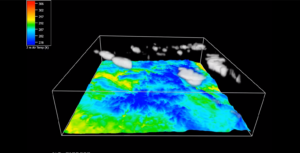
Different tasks require different tools. LEAF seeks to understand and utilize a variety of computational tools and quickly adapt to the acceleration of computational advancement. We generate large datasets on the order of hundreds of terabytes and are consistently discovering new methods for efficient analysis – and generation – of big data.
Currently, our team’s primary language is Python, however, we still utilize many other languages for specific tasks (R, NCL, Fortran, C, Go, MATLAB, etc). Some of our favorite analysis and visualization tools include: Xarray/Dask – see Pangeo Project, VAPOR, Leaflet and R Shiny.
Capacities:
-
- We run a variety of computationally expensive models on Boise State’s local High Performance Computing cluster – R2. Additionally, we participate in the node buy-in program which currently allocates two nodes for exclusive use to our group. Many of us also utilize national computing resources such as INL’s Falcon or NCAR’s Cheyenne.
- LEAF runs many different types of models on many different scales. Dynamical models include the Weather and Research Forecasting Model (WRF) and WRF-Hydro, GCM’s such as Community Atmosphere Model (CAM), Community Land Model (CLM), Parflow, and ED (Ecosystem Demography). We also have interest in statistical model frameworks using Keras and Tensorflow, as well as projects utilizing agent-based techniques.
Visualization Examples:
- An interactive historical climate exploration tool for the Snake River Valley created with R Shiny. Project funded by the Idaho State Department of Agriculture.